the japanese banksy
Written + Photographed By Sean Stillmaker
It’s believed you’re the average sum of those closest around you. That is to say your environment plays an integral part in your development. With ambitions beyond a skyscraper and a need for abundant space, street artist AITO plunged himself into a foreign environment around the world that could enable his growth potential in the world of street art.
The move from Tokyo to London may have seemed aversive, but for AITO it was the most logical one. If he is to be the best at what he does, then he has to study and be consumed by the best there is, as he told Kelley and I on the eve of his first exhibition.
“The UK has this high level of street art and its completely different from Japan,” AITO explained.
For him, street art started five years ago when he discovered Banksy through one of his art books while being enlightened in a bookstore. Inspiration turned into emulation, which led to an obsessive drive to excellence.
With Banksy being one of the most prolific street artists setting a standard of fortitude, public awareness and creative prowess, AITO set his sights to grow in an environment of eminence.
He began his London journey in April 2012 with Graffik Gallery, which had an undeniable allure for not only fostering exquisite talent, but it’s also located around the corner from a Banksy on Portobello Road.
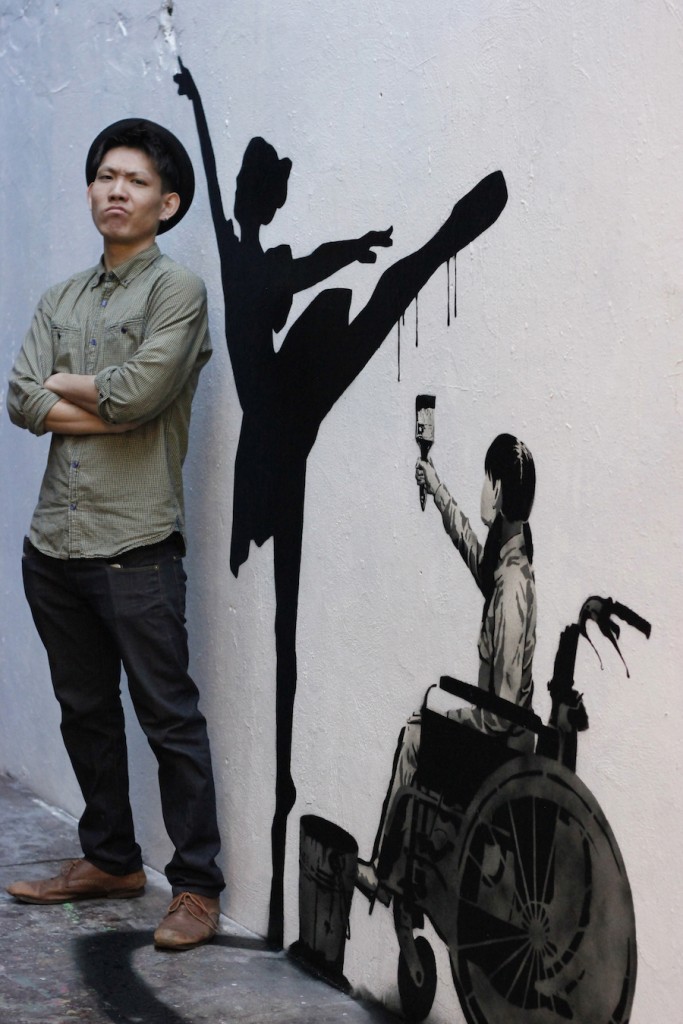
AITO elaborated on how he developed his skill set with stencils and improving his free hand work. But his mastery of the art lies in his conceptual execution delivering a distinct message meditating on life.
“I’m trying to do street art with my opinion on the philosophy of life,” AITO said. “I don’t want to paint anything without a message.”
As AITO explained his constructed approach, appropriately hanging behind him on the wall was one of his most personally reflective works about failure.
The blossoming painting depicts a street artist using his spray can to tag “failure,” which progresses from fledgling fills simplicity to earnest colorful craftsmanship. The artist’s perseverance through failure over time transcended his skill set.
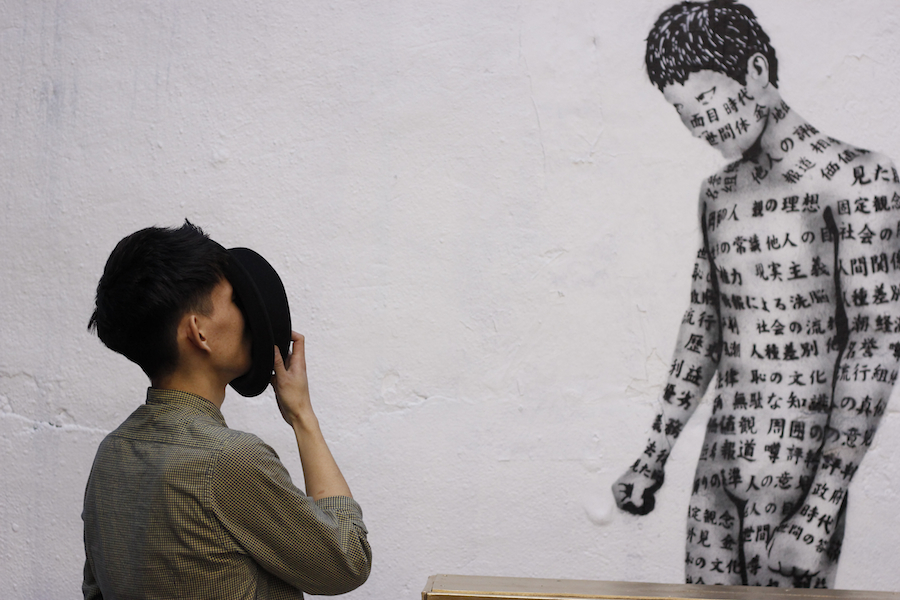
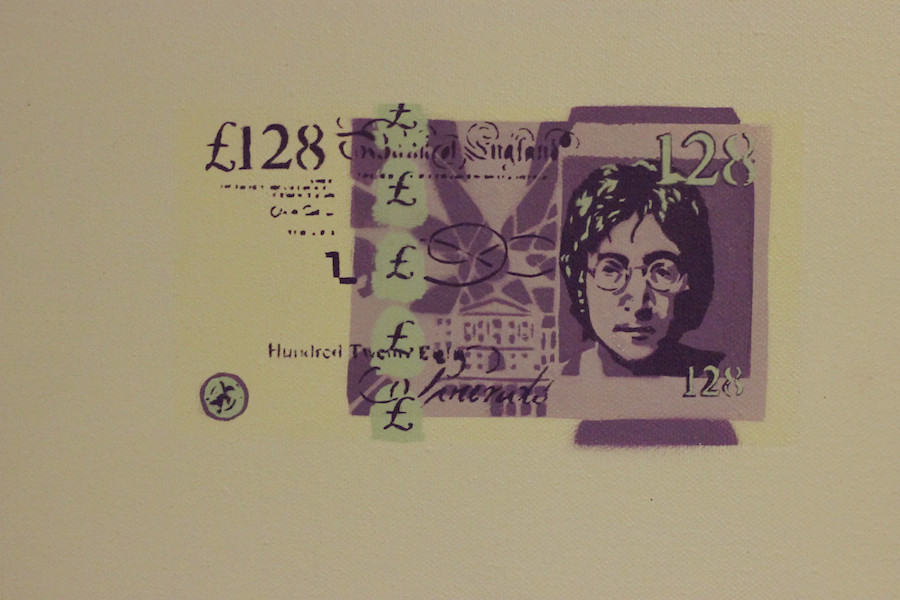
AITO’s perseverance came as an honorable right of passage within street art – getting caught by the police, he said.
“I think it was an important experience in my life. I had to give up to do street art in Japan. If I hadn’t been caught by police in Japan, maybe I wouldn’t have come to London,” he said. “I was doing rubbish street art in Japan until now. I needed to have been caught.”
His aspirations of excellence are depicted in “You Never Know Until You Try.” The painting’s subject is a man on a ledge holding balloons set amongst towering skyscrapers, resembling an interpreted Chicago skyline. It’s seemingly impossible to accomplish his dream of flying, but you don’t know until you try, AITO said.
The spray can and stencil work for the painting, currently on the wall at Cambridge Gardens and Ladbroke Grove took him approximately four hours to complete, he said. AITO’s visionary approach instantly struck Kelley and I on this arbitrary walk inspiring us to know more about this illustrious artist.
AITO’s courage to jump right into the deep end to sink or swim is a true testament to his determination and dedication. As his recent work “Beginning Of Rot” personifies, the minute you give up, “you’ll turn to rubbish.”
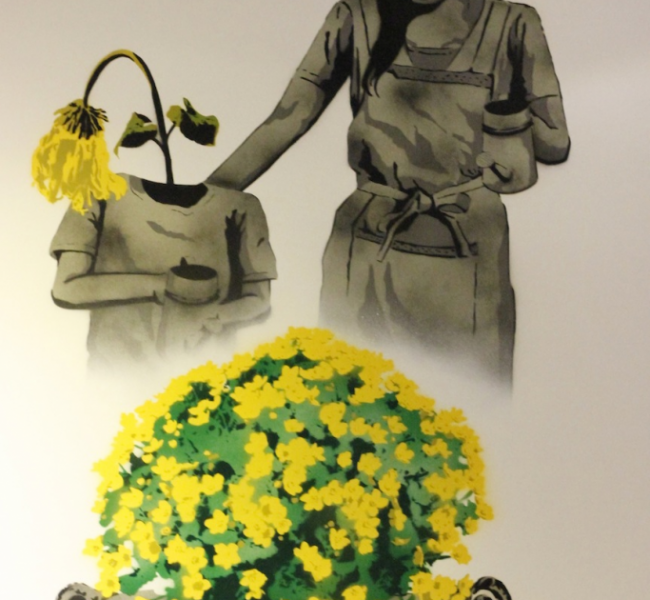
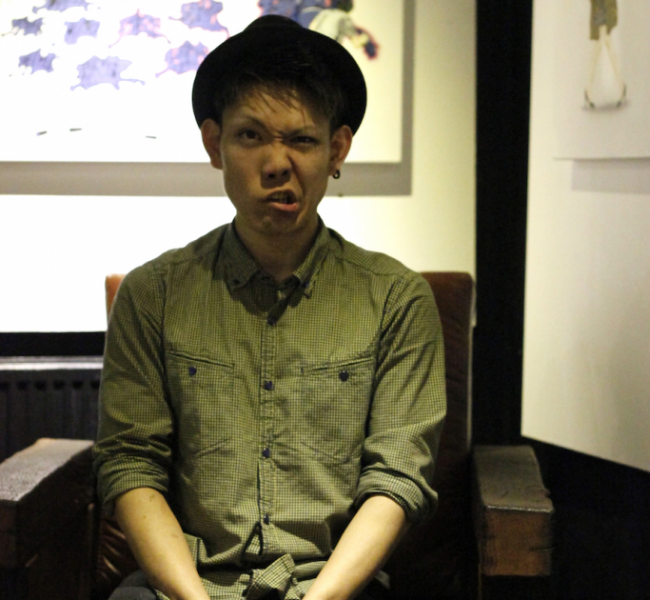
AITO credits much of his development and ability to get to his first exhibition by learning with the other artists at Graffik Gallery having been taken under the wing by Trust.iCon.
“It is so easy even when working with a great concept for an idea to be lost in translation,” Trust.iCon said. “But for AITO, it’s second nature and sometimes delivered with such subtlety that it will have you thinking about what he’s trying to say and then it hits you.”
Having sharpened his skills and attained his first exhibition, AITO is ready to close this chapter and begin the next journey back in Japan. AITO’s preparing for the move back home, as his visa is about to expire, and soon enough he anticipates to be living up to the standard of the “Japanese Banksy.”
Related Reading





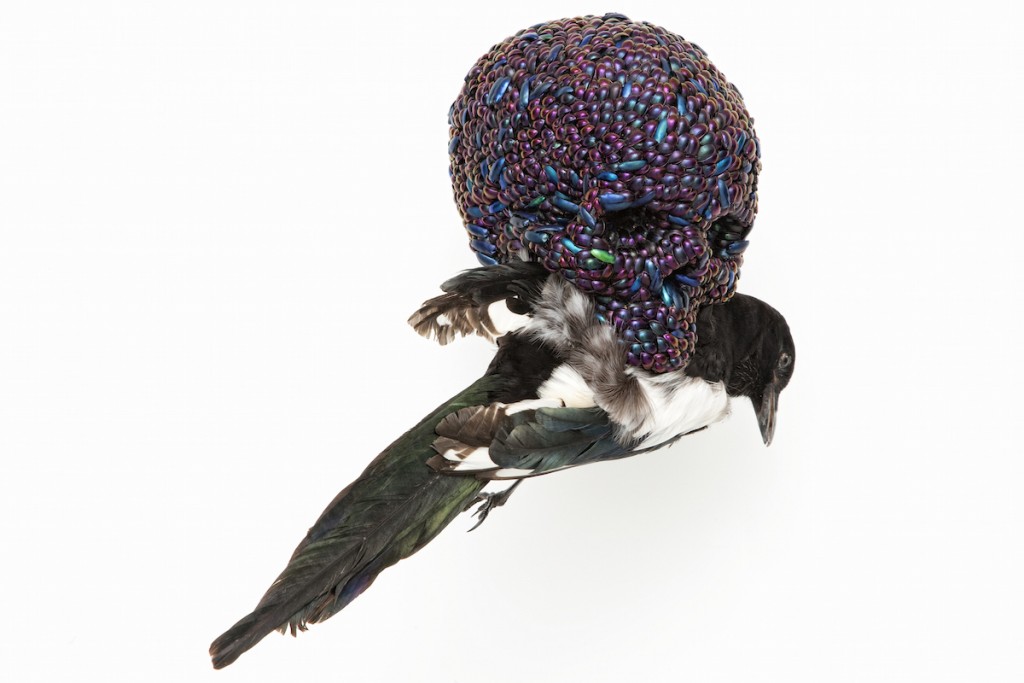
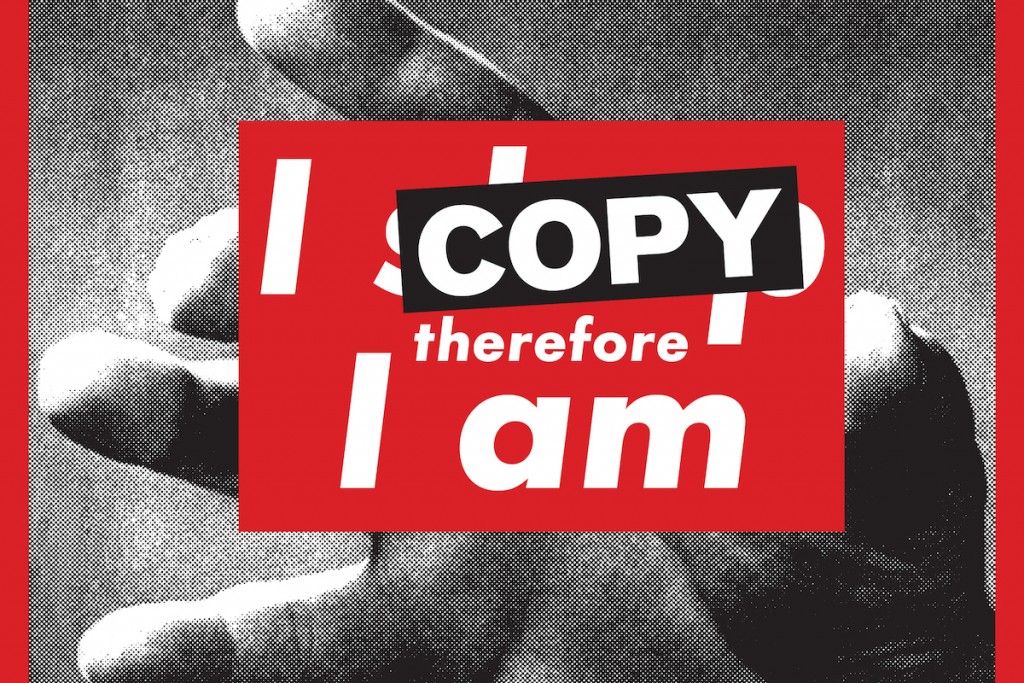
 @majesticdisorder
@majesticdisorder